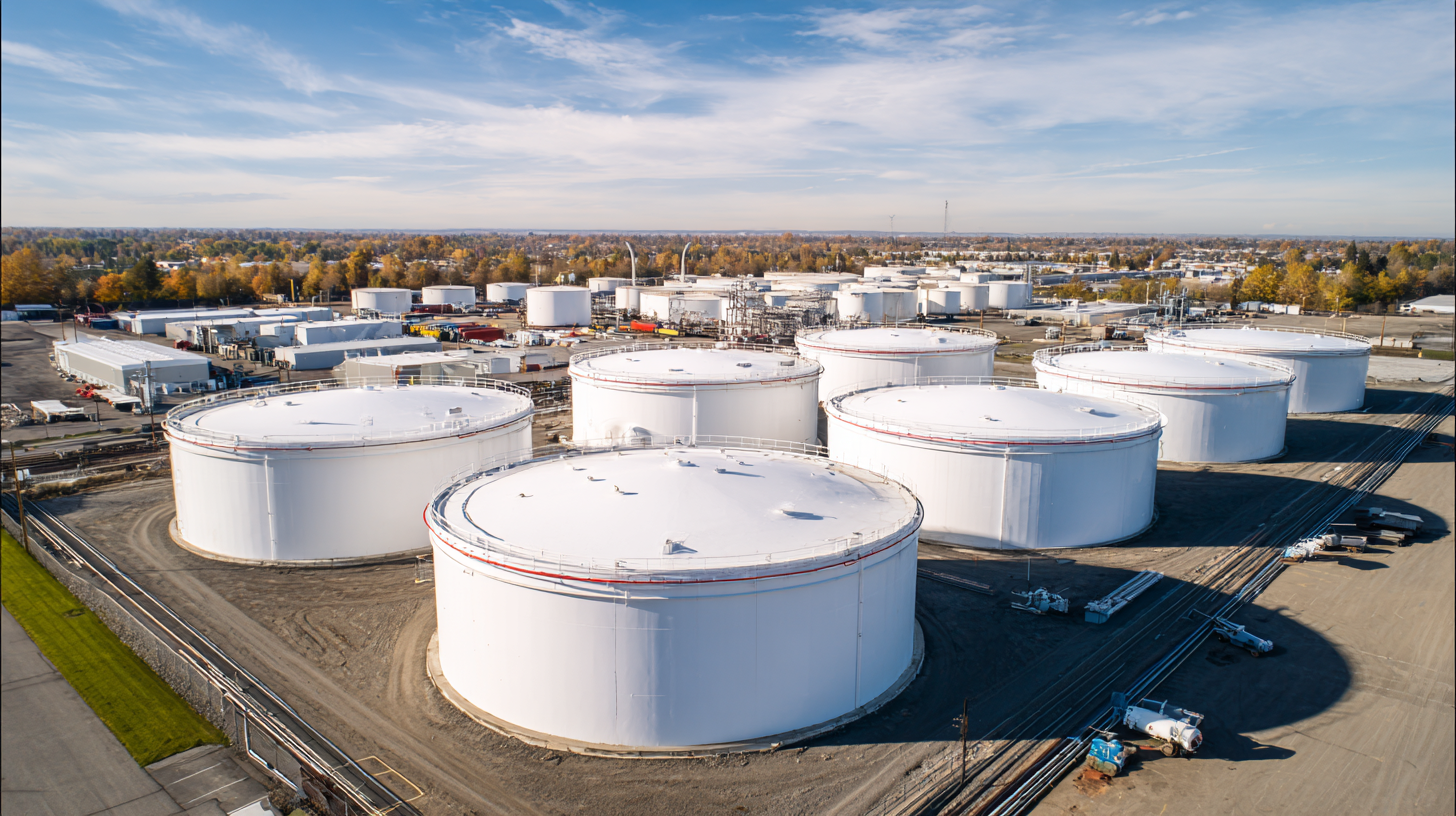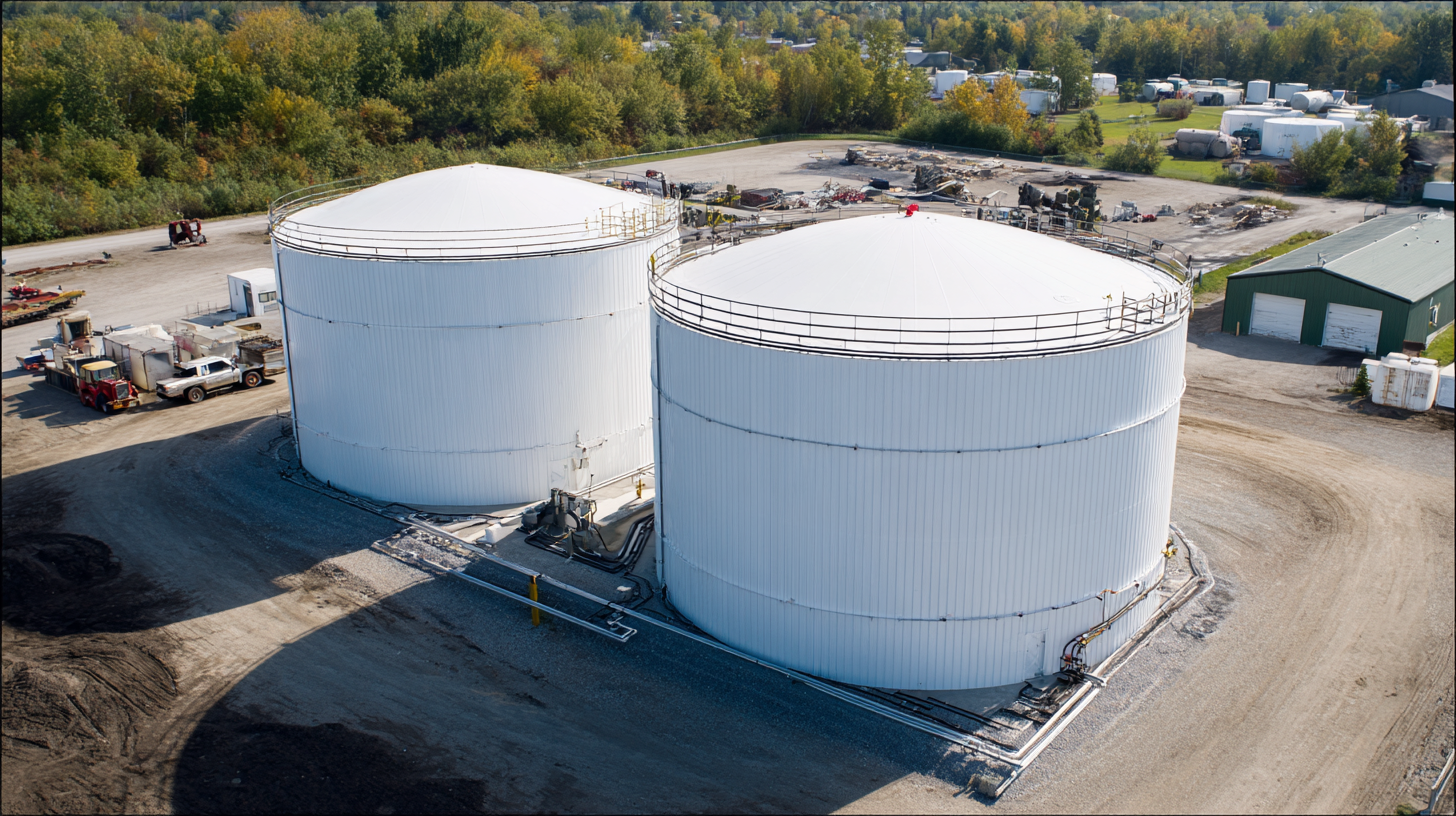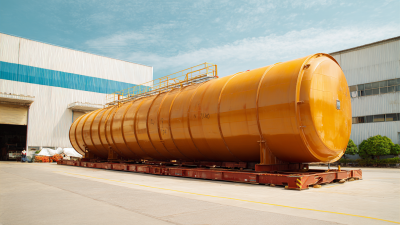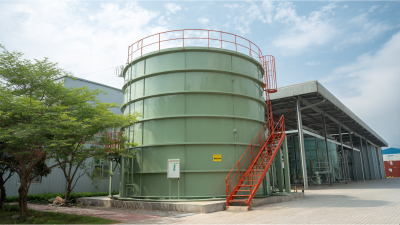In the realm of safety and disaster preparedness, the significance of a Fire Water Storage Tank cannot be overstated. As we move towards 2025, the demand for efficient and reliable water storage solutions continues to rise, driven by the ever-increasing risks associated with wildfires and other emergencies. These tanks play a crucial role in ensuring that fire departments have immediate access to water, allowing them to respond swiftly and effectively in the event of a fire.

This article delves into the ten best fire water storage tanks available in 2023, highlighting their features, efficiency, and safety measures. Each tank is evaluated based on capacity, material, installation ease, and maintenance needs to provide you with a comprehensive guide to making informed decisions. As we explore these options, it's essential to understand the importance of investing in quality fire water storage systems that not only enhance safety but also promote efficiency in fire response efforts. Whether for residential, commercial, or industrial use, the right fire water storage tank can make a significant difference in mitigating fire risks and ensuring optimal preparedness.
 Fire water storage tanks play a crucial role in fire safety management, especially as we look toward 2025 and beyond. These tanks are designed to provide a reliable source of water during firefighting operations, ensuring that emergency responders have immediate access to the resources they need to combat fires effectively. The significance of these systems cannot be overstated, as they help mitigate damage to property and protect lives, particularly in areas prone to wildfires or industrial emergencies where water supply may be limited.
Fire water storage tanks play a crucial role in fire safety management, especially as we look toward 2025 and beyond. These tanks are designed to provide a reliable source of water during firefighting operations, ensuring that emergency responders have immediate access to the resources they need to combat fires effectively. The significance of these systems cannot be overstated, as they help mitigate damage to property and protect lives, particularly in areas prone to wildfires or industrial emergencies where water supply may be limited.
Moreover, the efficiency of fire water storage tanks contributes to a comprehensive fire safety strategy. By integrating advanced monitoring technologies and ensuring proper maintenance protocols, these tanks can enhance overall readiness. Adequate fire water supply not only supports rapid response times but also reassures communities about their safety in case of emergencies. As regulations evolve and communities prioritize safety measures, investing in optimal fire water storage solutions will be essential for any effective fire safety management plan.
When selecting the best fire water storage tanks, several key features are essential for ensuring optimal safety and efficiency. First and foremost, the material of the tank plays a crucial role in its durability and longevity. Tanks made from high-quality, corrosion-resistant materials such as fiberglass or stainless steel can withstand harsh environmental conditions and ensure the integrity of the stored water. Additionally, the tank should meet relevant safety standards and regulations, guaranteeing that it is suitable for firefighting purposes.
Another vital aspect to consider is the tank's capacity and design. It’s important to choose a tank that can hold enough water to effectively combat potential fires in the area. Moreover, a well-designed tank will facilitate easy access for maintenance and inspections, which are critical for ensuring the water remains uncontaminated and readily available. Lastly, features like built-in monitoring systems, overflow protection, and efficient installation processes can significantly enhance the overall functionality and safety of fire water storage tanks, making them indispensable assets in fire prevention strategies.
This bar chart illustrates the capacity of various fire water storage tanks in gallons. Ensuring adequate water storage is crucial for fire safety and can significantly enhance emergency response capabilities.
In 2025, the fire water storage industry is set to align even more closely with evolving safety regulations and standards, influenced by increased awareness of fire hazards and environmental impacts. The National Fire Protection Association (NFPA) has developed specific guidelines that are critical for ensuring the reliability and efficiency of fire water storage tanks. According to recent data from the NFPA, around 70% of fire-related fatalities occur in residential properties, making adherence to these standards crucial for enhancing community safety.
Moreover, the Environmental Protection Agency (EPA) has introduced more rigorous criteria for the materials used in the construction of fire water storage systems. These regulations emphasize the importance of selecting non-corrosive and durable materials to prevent water contamination and ensure long-term functionality. Reports indicate that systems compliant with the latest EPA standards can enhance water quality by 45%, significantly reducing health risks associated with stagnant or polluted water. As we approach 2025, understanding and implementing these industry standards will be paramount for organizations seeking to optimize their fire water storage systems while safeguarding public health and safety.
| Tank Type | Storage Capacity (Gallons) | Material | Fire Rating | Compliance Standards |
|---|---|---|---|---|
| Above Ground Steel Tank | 5,000 | Steel | 2-Hour | NFPA 22 |
| Underground Fiberglass Tank | 10,000 | Fiberglass | 1-Hour | UL 1316 |
| Collapsible Water Bladder | 2,000 | Specialized Fabric | N/A | NFPA 1142 |
| Polyethylene Tank | 1,500 | Polyethylene | N/A | ASTM D1998 |
| Concrete Water Storage Tank | 20,000 | Concrete | 4-Hour | AWWA D110 |
When selecting fire water storage tanks, the material type plays a crucial role in ensuring optimal safety and efficiency. Common materials include steel, fiberglass, and polyethylene, each offering distinct advantages and disadvantages.
Steel tanks are renowned for their durability and resistance to fire, making them a popular choice in industrial applications. However, they are susceptible to corrosion if not properly maintained, which can compromise their integrity over time.
In contrast, fiberglass tanks provide lightweight yet robust alternatives, often favored for their resistance to chemicals and UV rays. This makes them ideal for environments where the tank may be exposed to harsh conditions. However, fiberglass can be more costly upfront and may require specialized installation.
Polyethylene tanks, on the other hand, are highly resistant to corrosion and impact, and they offer a cost-effective solution for smaller installations. Nevertheless, their performance may not match that of steel and fiberglass tanks in extreme temperature fluctuations.
Understanding these material differences is essential for selecting the right fire water storage tank to meet specific safety and efficiency requirements.
 Future innovations in water storage technologies are poised to significantly enhance fire safety measures across various industries. With the increasing frequency of wildfires and urban fires, the need for efficient and reliable fire water storage systems has never been more critical. Advances in material science have led to the development of resilient tanks that can withstand extreme temperatures and environmental conditions, ensuring that they remain operational during emergencies. These new materials not only extend the lifespan of storage systems but also reduce maintenance costs, freeing up resources for other fire safety initiatives.
Future innovations in water storage technologies are poised to significantly enhance fire safety measures across various industries. With the increasing frequency of wildfires and urban fires, the need for efficient and reliable fire water storage systems has never been more critical. Advances in material science have led to the development of resilient tanks that can withstand extreme temperatures and environmental conditions, ensuring that they remain operational during emergencies. These new materials not only extend the lifespan of storage systems but also reduce maintenance costs, freeing up resources for other fire safety initiatives.
Moreover, smart technology integration is revolutionizing how we manage fire water storage. IoT-enabled tanks can provide real-time data monitoring, allowing fire safety officials to track water levels and detect leaks or damages immediately. This proactive approach ensures readiness when emergencies arise, optimizing response times and resources. Furthermore, automation systems can regulate water distribution and refill processes, ensuring that tanks remain at optimal levels and thus enhancing efficiency. As these innovations continue to emerge, the future of fire water storage looks promising, paving the way for safer communities and more effective firefighting strategies.






